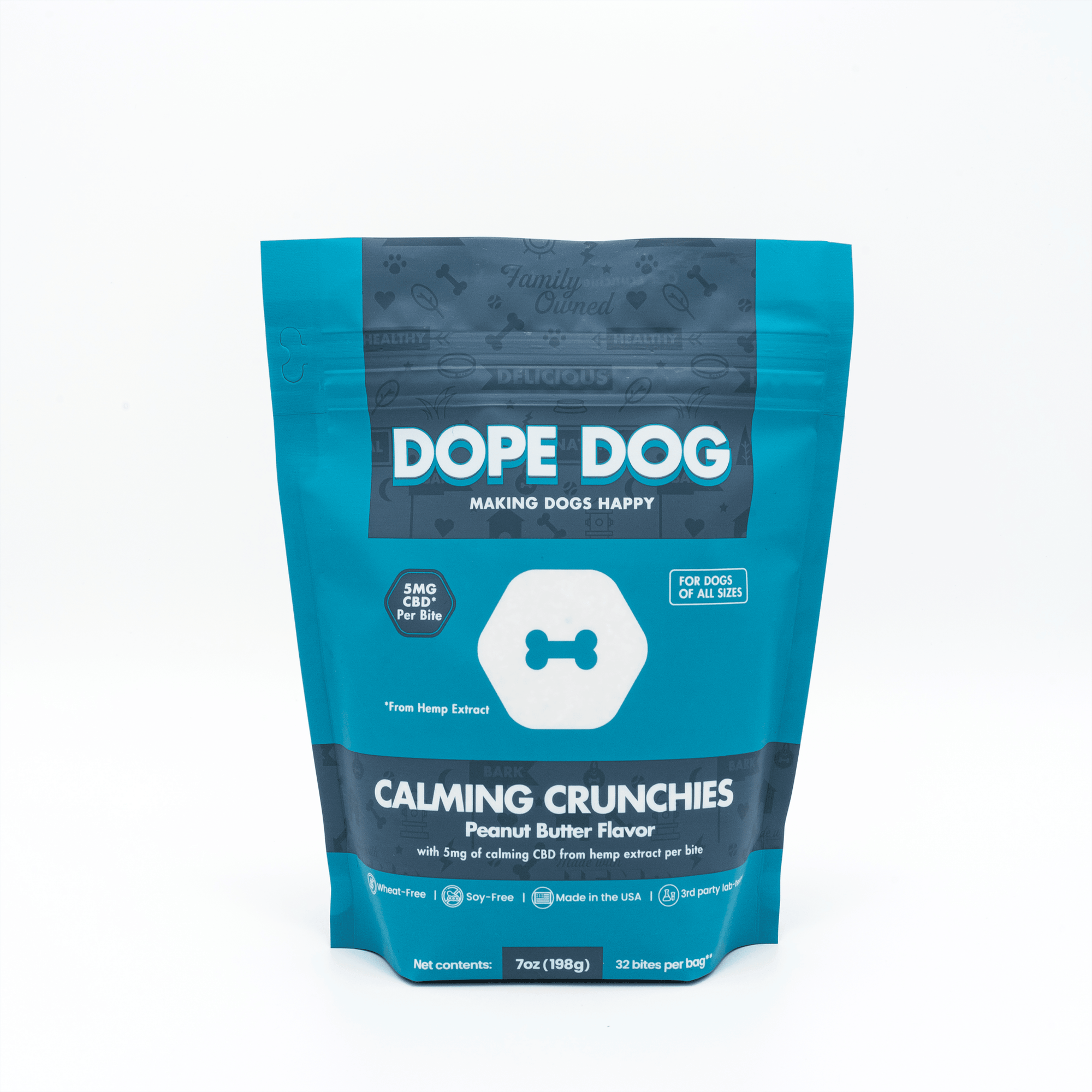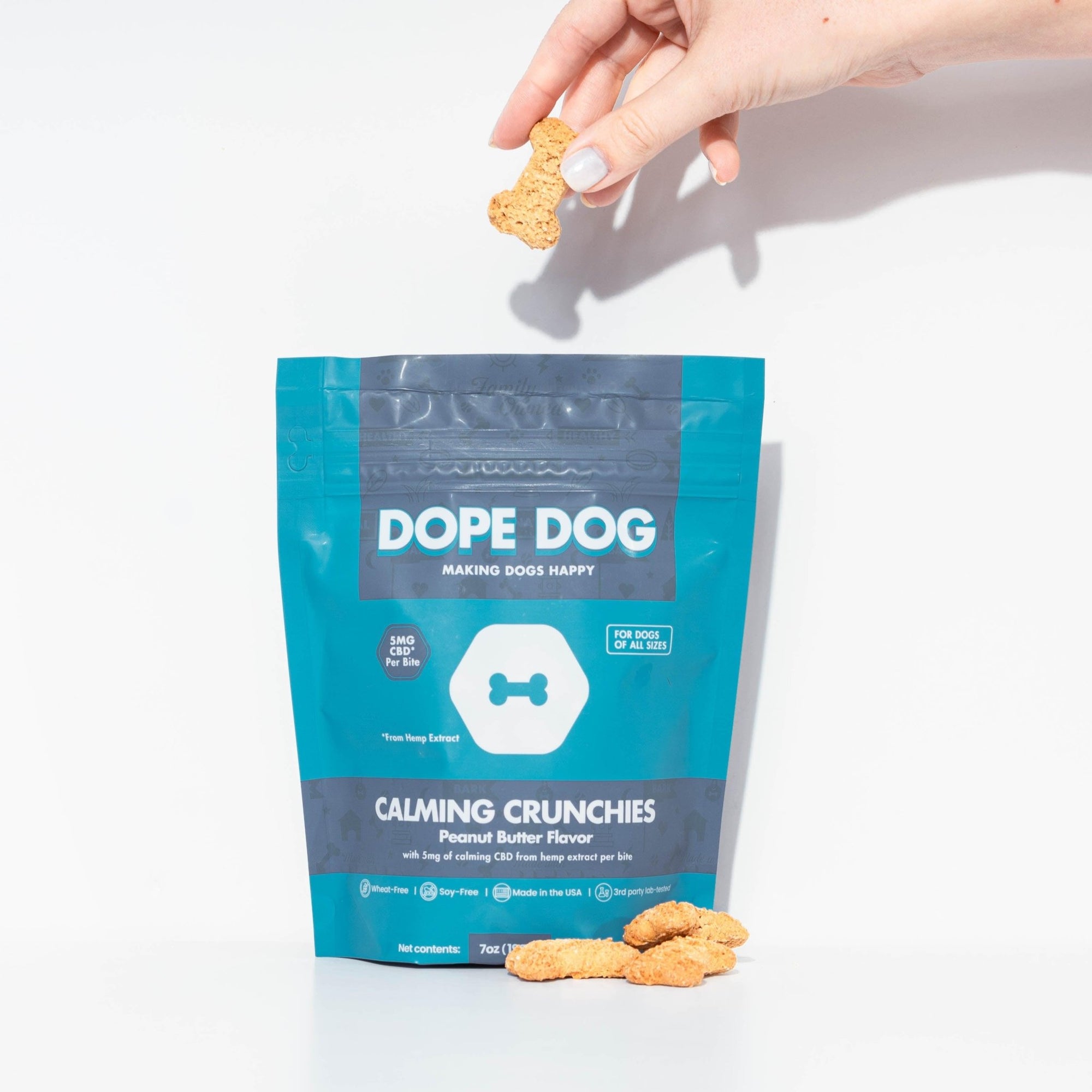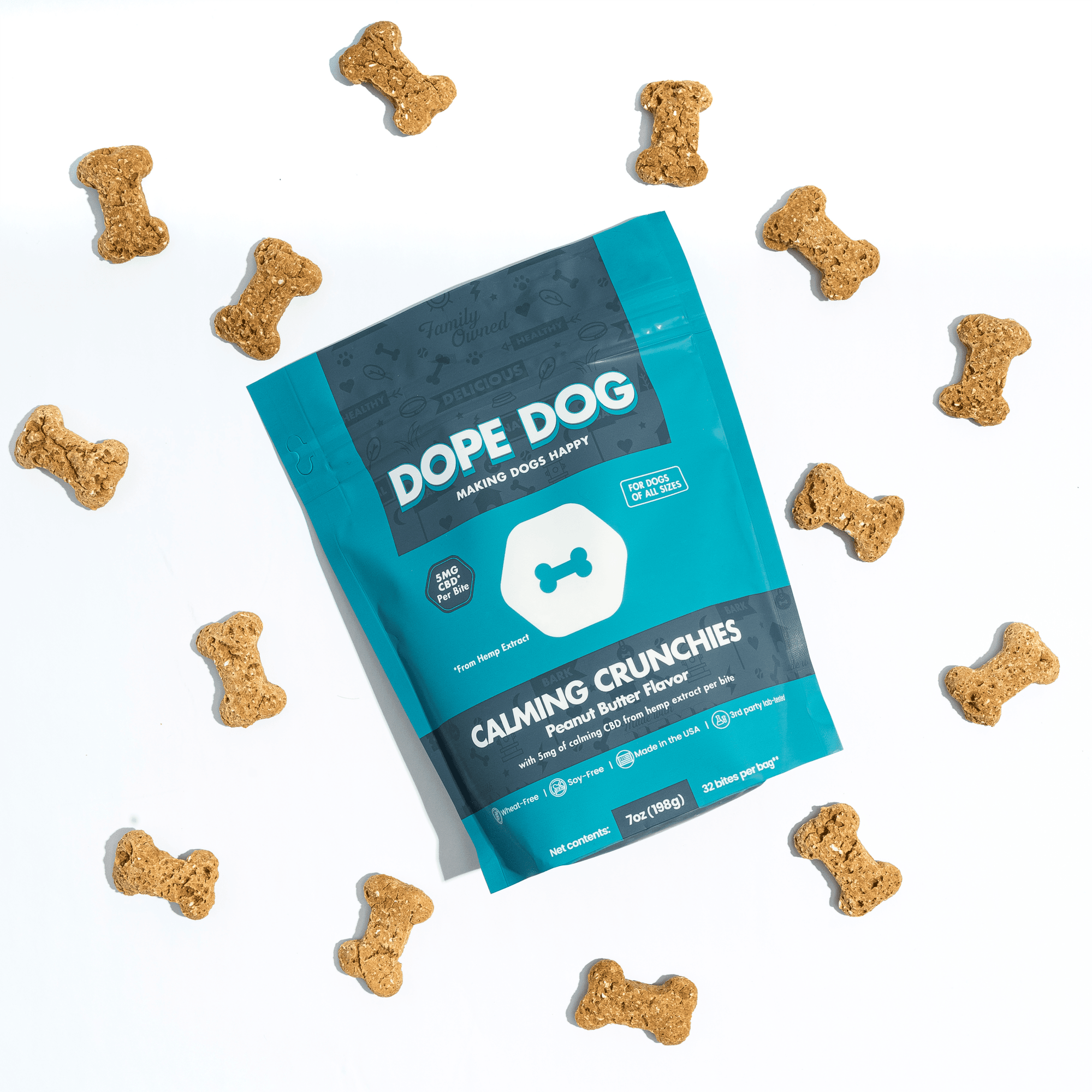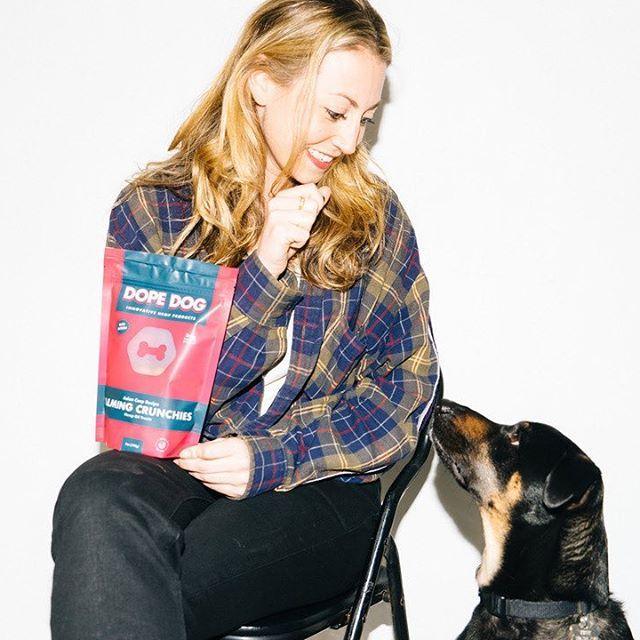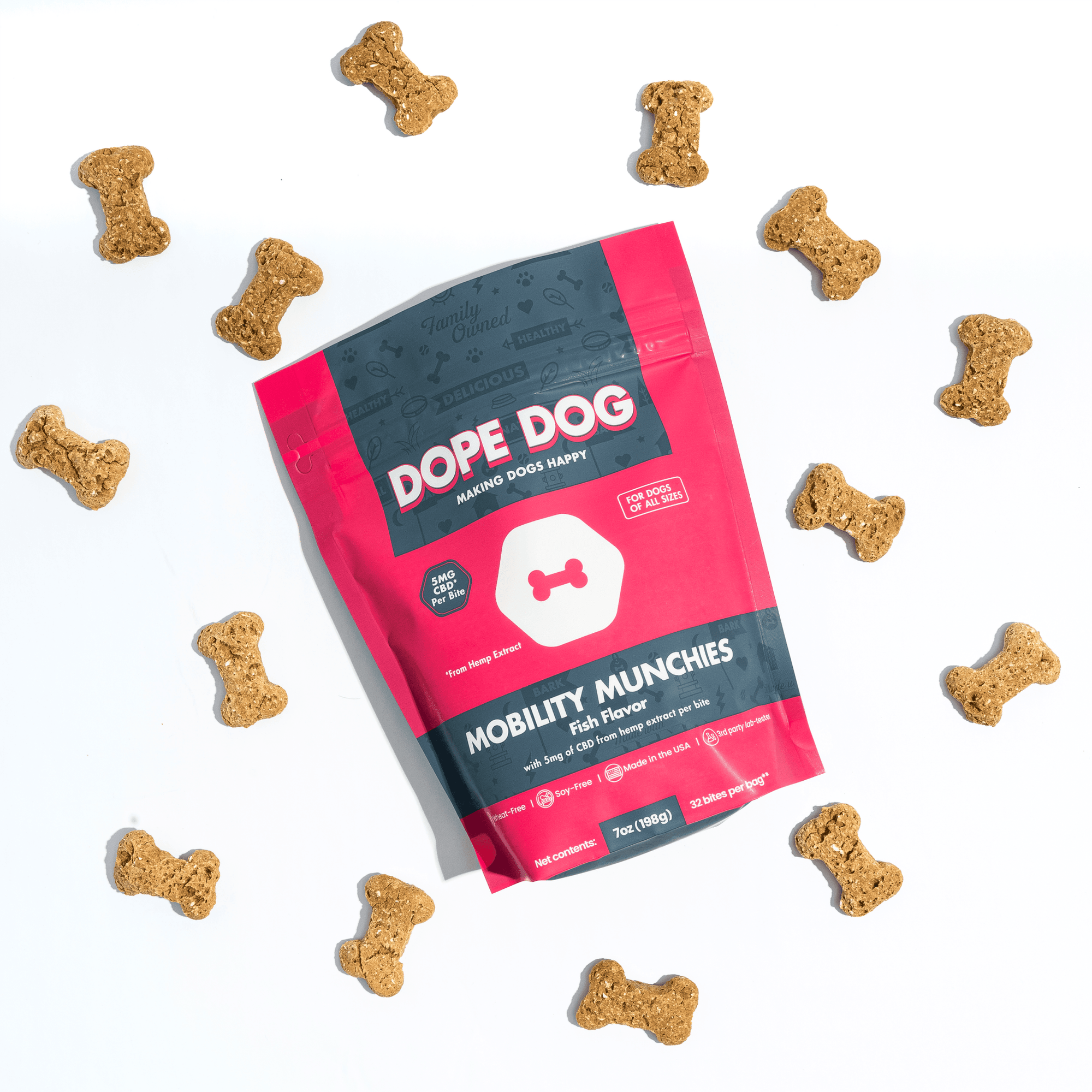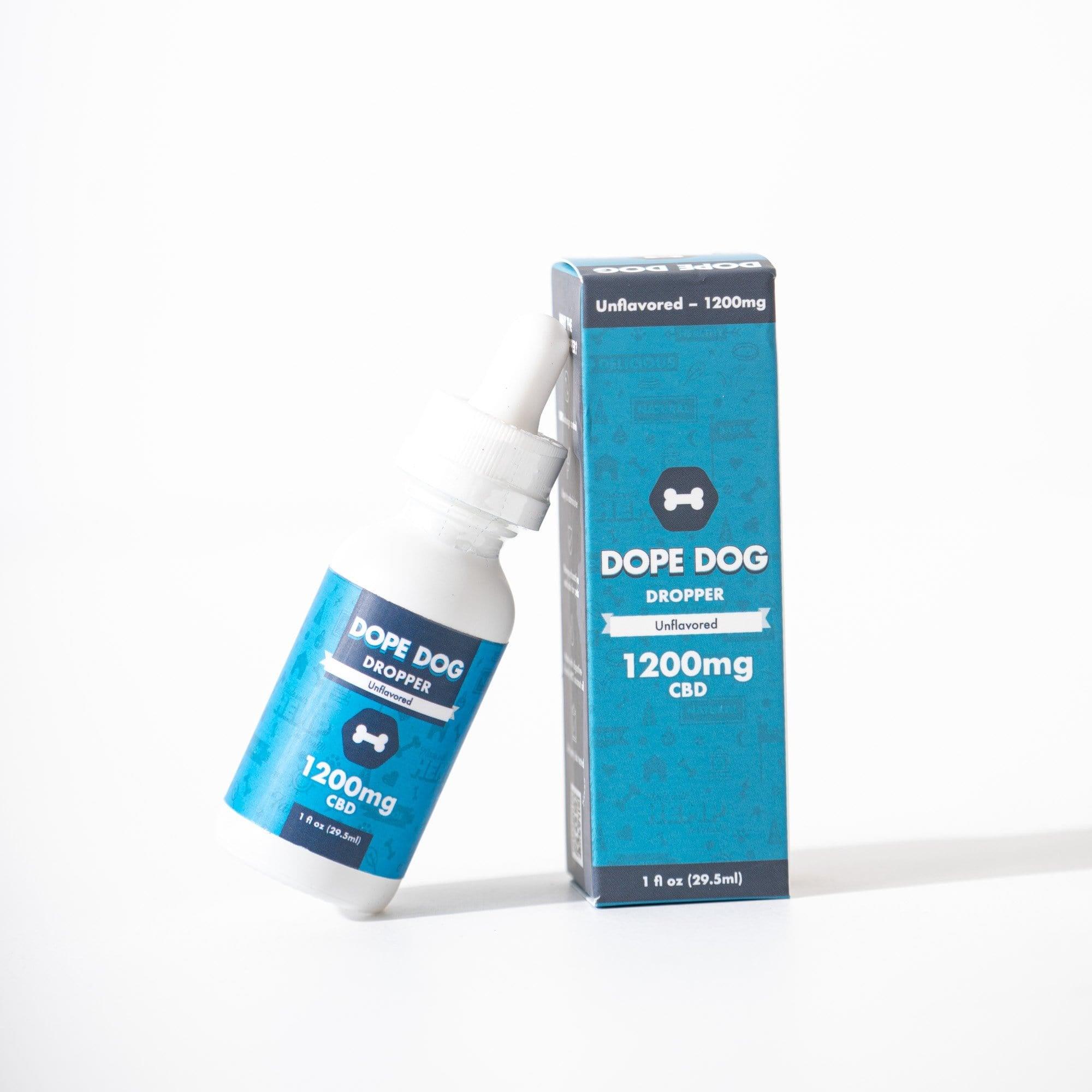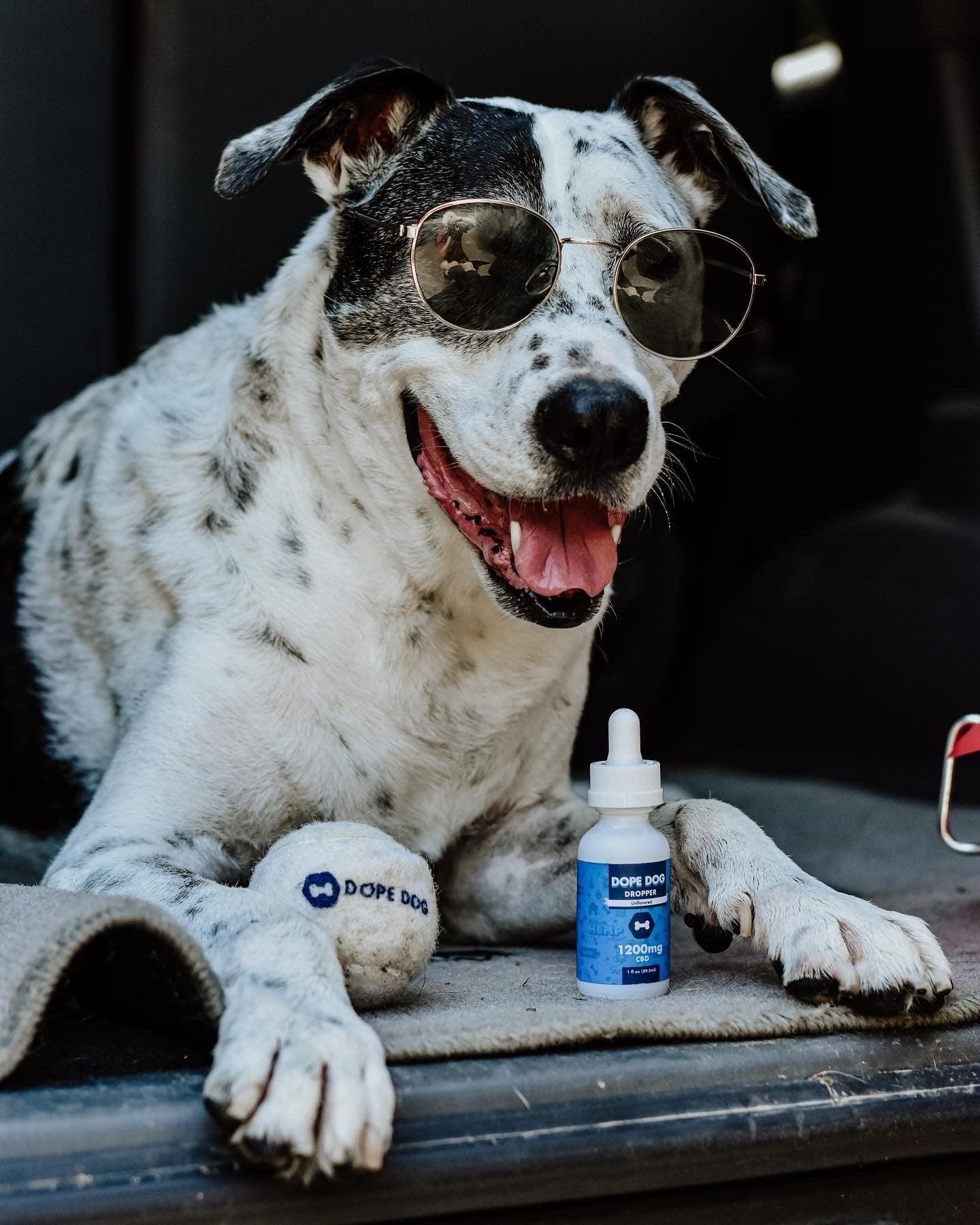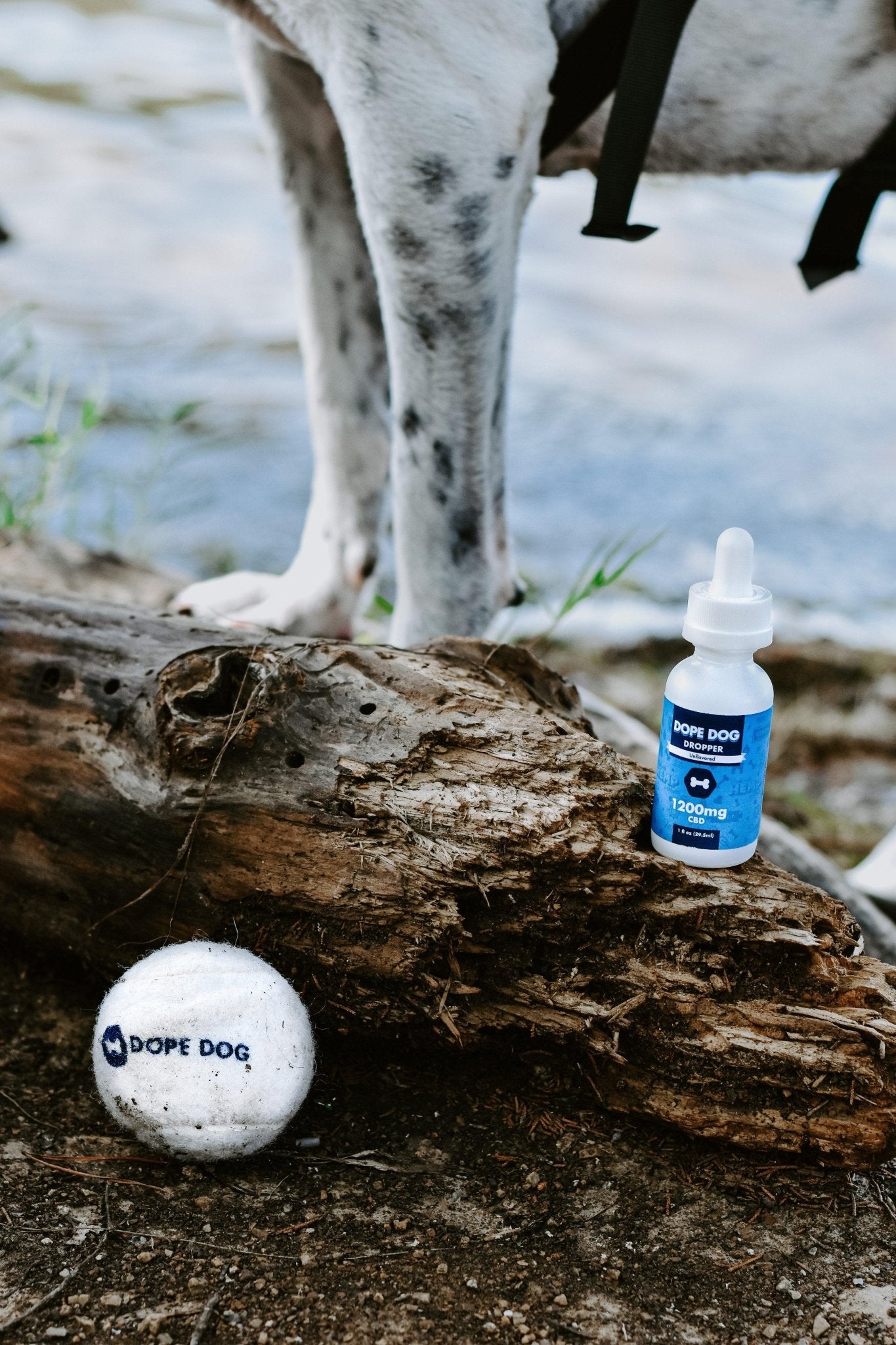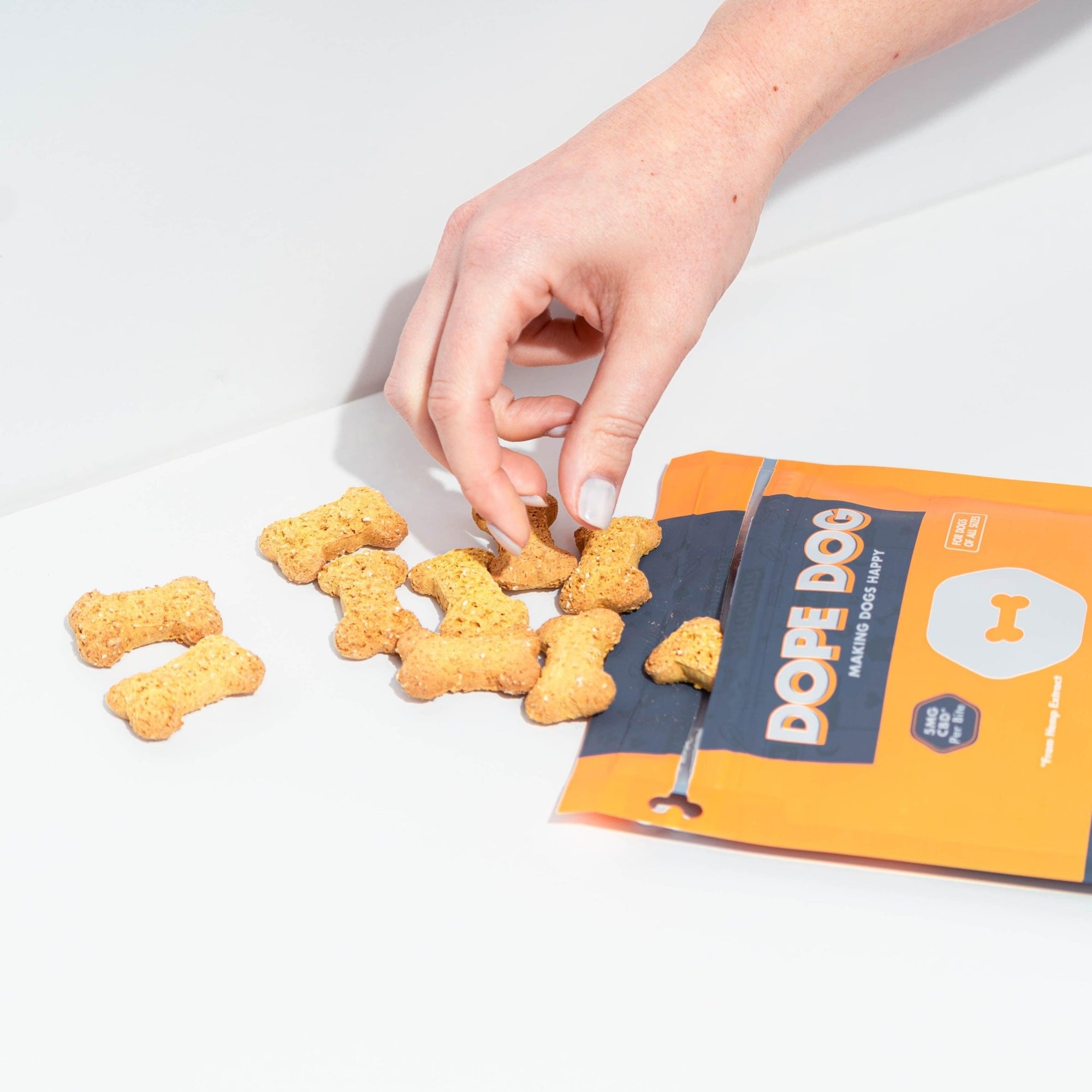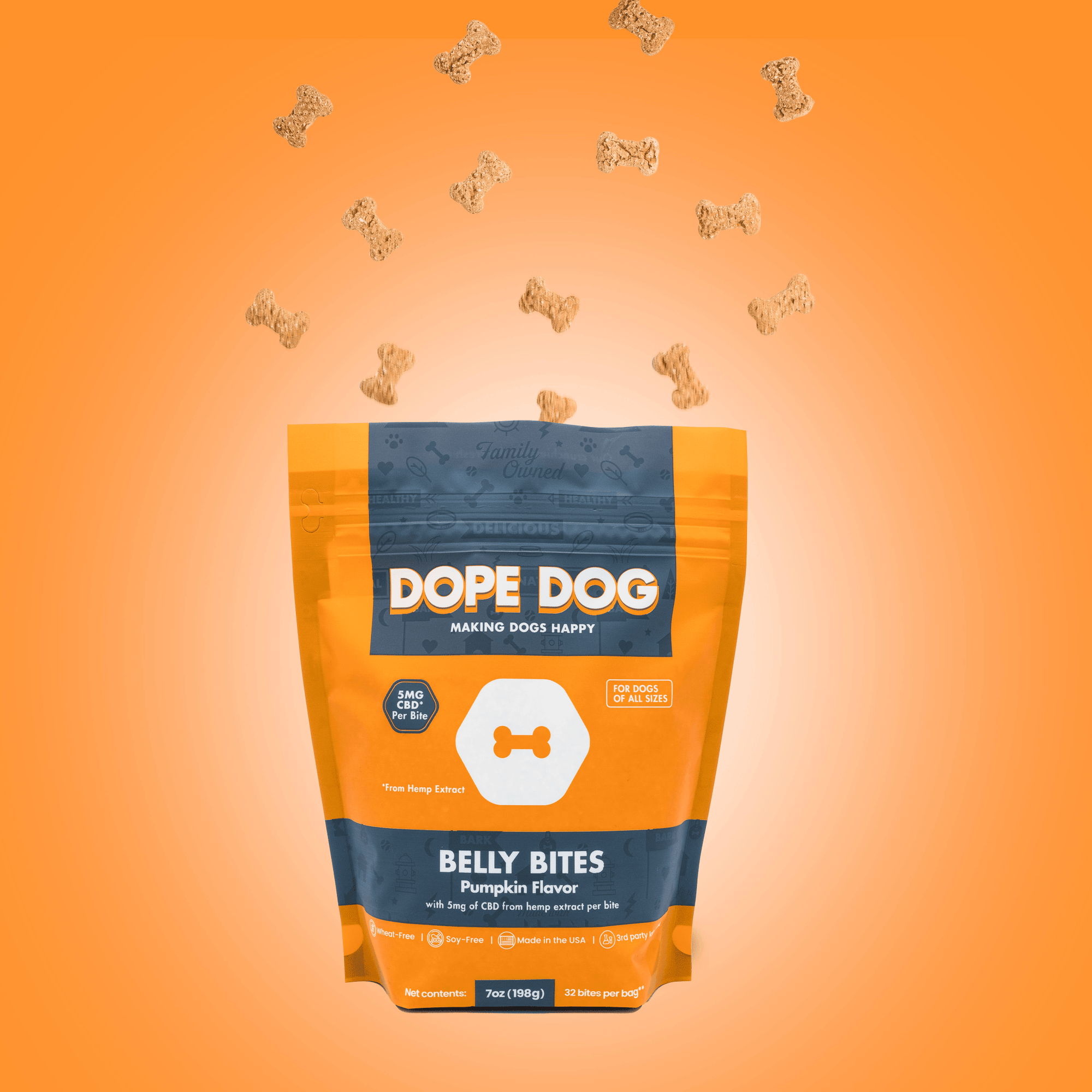It’s normal to have eye discharge, which plays a significant role in lubricating the eyes, fighting off invaders, and alleviating irritations. However, a dog with significant eye discharge may be suffering from underlying health problems.
The dog's body increases discharge when it senses that there’s something wrong with the eyes. For example, if there is a possible infection, the body will create a thick mucus substance to trap and get rid of the invader.
However, too much thick mucus can cause irritation, redness, and swelling of the eye or the skin near the eyes. If that is left unmanaged, it can make your pet vulnerable to a secondary bacterial infection, which in turn might lead to blindness or scarring of the cornea.
All of this can be very stressful, but at Dope Dog, we know there are steps you can take to help your dog relax. Here are some useful pieces of information that can provide you with more detail about what you need to know when it comes to excessive discharge in your dog's eyes.
Related: Zyrtec for Dogs: Better Safe than Sorry
Causes

There are various causes of eye discharge, and here are the common ones that you should know:
Allergies
If your dog has clear discharge with the additional symptoms of itching and irritation, it might be a result of allergies. This is more likely to be true if both eyes are affected.
Allergies are most common during the spring seasons, where the dust and pollen are blowing everywhere. Once the pollen gets to the dog's system, the body will release mass cells, which will create histamine.
Histamines are responsible for the majority of allergy symptoms, such as watery eyes, flushing of the skin, sneezing, and asthma. If you notice these other symptoms, it’s more likely that your dog’s eye discharge is just another sign of an allergic reaction.
You can talk to your vet about obtaining anti-histamine medication such as Zyrtec to reduce allergies.
Related: The Complete Guide to Dog Allergies
Conjunctivitis
Conjunctivitis is an inflammation of the lining of your dog's eyes. There are various causes of conjunctivitis, but the most common one is an infection.
Keep in mind that conjunctivitis often occurs in one eye. If your dog has obtained a viral infection, then most likely, the discharge would be watery and thick. However, if it’s from bacterial infection, then it would create thick, yellow-green pus.
Viral infections will go away on its own, so your dog would only need eyedrop lubrication to alleviate conjunctivitis. However, bacterial infections will require antibiotic medication prescribed by your veterinarian.
Epiphora
Epiphora is another word for excessive tearing, which can cause irritation and inflammation of the eyes. This is often caused by abnormally grown eyelashes that grow inward and scratches the cornea leading to redness and watery eyes.
However, treating this ailment depends on the underlying causes. If an infection causes the Epiphora, then your dog will need a combination of antibiotics and corticosteroid eye drops. A duct obstruction is the cause, surgery might be the next step for treatment. If the problem originates from long eyelashes, then your veterinarian will simply trim those down.
Whatever the case is, if your dog has a lot of tears, redness, pain, and swelling around the area of the eye, then talk to your veterinarian to find out how to proceed.
Dry Eyes

Dry eyes are an indication that your dog is unable to produce enough lubrication to cleanse the eyes. The symptoms can lead to inflammation and mucus that is caused by injury, dysfunctional tear glands, or the body's own immune system attacking the gland near the eyes. Keep in mind that infections can be very risky for dogs with dry eyes. It could exacerbate current pain and swelling of the eyes.
Another problem is that if the ulcers in the cornea of a dog’s eye can be extremely detrimental without lubrication from tears. The eyelashes can scratch the surface of the cornea every time Fido blinks.
The treatment option is very simple. Once you bring the dog to the veterinarian office, they can prescribe artificial tears that can be placed in your dog's eyes to provide an excellent source of lubrication.
However, if the causes are due to autoimmune issues, then your vet will have to prescribed immunosuppressant drugs. If a bacterial infection causes this, then your dog will need antibiotic eye drops.
Glaucoma

This is caused by a build-up of pressure in the eye, which can lead to bulging and cloudiness as well as an excess amount of discharge.
Glaucoma can result in extreme pain, and the veterinarian will have to decrease the ocular pressure with surgery and medication. Once it goes away, you can provide some CBD dog treats to help alleviate the stress. Keep in mind that CBD substance can reduce eye pressure, therefore, decrease the recurrence of glaucoma.
Tight collar
When putting a collar on your dog, you should be able to put two fingers between the collar and the neck. If you aren’t able to do that, then that means the collar is too tight.
If the collar is tight, it can cause congestion and bulging of the eyes. This can easily result in eye discharge and choking, which are both signs that the dog is suffering from something tight around his throat.
Pulling with the leash
When you wrap the leash around your dog's neck and continuously pull it, the pressure can cause the eyes to bulge, become red, and produce excessive tears.
The best thing to do is to put a harness around the dog and attach the leash to it, so you end up pulling the entire body rather than just the neck. Always make sure to check the tightness of your dog’s leash so you’re not causing unnecessary discomfort.
Predisposed breeds

There are certain breeds that are vulnerable to excessive eye discharge. This is prominent in flat-face dogs such as Pekingese dogs, Boxers, and Bulldogs. This is mainly because dogs with flatter faces often have protruding eyes and shallow eye sockets, which can predispose them to a lot of environmental stress and irritation. When that happens, the dog's body will create a lot of discharge to lubricate the eyes to reduce irritation. These brachycephalic breeds are also prone to tear drainage problems, eyelids that grow inward, eyelash irritation, and much more.
There are other breeds that are vulnerable to excessive discharge, such as the ones with loose facial skin like Cocker Spaniel, Saint Bernards, Bloodhounds, and Terrier. Their eyelids tend to roll outward, and they have a rare condition called Cherry Eye Disease, where the glands in the eyelid fall at an abnormal position. Steroids and antibiotics can mitigate the symptoms, but in severe cases, surgery is necessary to treat these conditions.
How to Apply Eye Medication
A lot of times, treatment for excessive eye discharge will require ointment or eye drops. If you have a restless pup, it can be difficult to administer these drugs, but there are more efficient ways of implementing them.
Here are some quick tips to help you out:
- It’s best to have the ointment or eye drop close at hand, then clean any discharge around your dog's eyes with a cotton ball and warm water.
- If you are using eye drops, tilt your dog's head back, rest your hands on his or her head, and squeeze the drop to get some liquid on the upper part of the eyes.
- For eye ointment, you will have to pull the dog's lower lid to create a pocket for the medication. Rest your hand on his head, and squeeze a little bit of ointment.
- After you apply the ointment or drops, it’s essential to open and close the lid for a few seconds to allow the medication to spread.
How to Prevent Eye Problems
When you take a look at your dog's eyes, they should be roughly the same size with little to no crust or irregularities. There should not be any squinting, tearing, and the inner eyelids should not be visible. After that, pull down the lower lid to make sure that they are pink and not red or white.
If you see any discharge, tearing, cloudiness, or stains that are abnormal for your dog, then you know that something is wrong, and you will need to call the vet.
The best way to keep your four-legged friend's eyes healthy is to keep the long furs out of their eyes, so a trip to the groomers is an excellent way to do that.
You should also keep irritating substances away from the eye, such as soaps, shampoo, and medication. See if the eyes look red, irritated, and dry, and if they are, then obtaining some eye drops to lubricate them. Make sure to use natural products with minimal ingredients for your dog’s cleansing routine, like our Oatmeal Lavender CBD Shampoo.
Corneal Ulcers
Corneal ulcers are very deep or superficial cornea sores on your dog’s eyes.
The cornea is like a transparent, convex coat on the surface of the eyeball. You can compare the cornea to a windshield for your eyes. Tears perpetually moisten the surface of the cornea and enable it to wick away airborne particulates.
The cornea protects the frontal portion of the eyeball from dust contamination. And the cornea is also vital for focusing light so that it shines on the retina. The cornea is located at the back of the eyeball.
Without the cornea, the inner components of the eyeball would be directly exposed to the elements.
The cornea can be damaged or infected without initially or directly affecting the eyeball for a while. A cornea can be scratched or get infected and inflict a lot of pain.
But a corneal sore will only endanger the eyeball if a severe problem is left untreated.
Corneal ulcers can be caused by many factors. Your dog’s corneal ulcers could be caused by a disease or a lack of proper tear generation.
Usually, a foreign material larger than a dust particle gets in between the interior eyeball side of the eyelid and cornea and scratches the cornea. The cornea gets infected and becomes an oozing sore.
Canine corneal ulcers cause light sensitivity, excessively watery eyes, the development of a film over the cornea, and an oozing, unpleasant discharge from the eye.
If you notice pus-like and discolored discharge leaking from your dog’s eyes, get them to a vet as soon as possible. A corneal ulcer can usually be treated with anti-inflammatory drugs or antibiotics. In the worst-case scenario, surgery may be required if the problem is deemed serious.
Brachycephalic Dog Breeds
Brachycephalic Dog Breeds are breeds of dogs that are instantly recognizable for certain aesthetic features.
And some brachycephalic breeds are more susceptible to developing eye discharge problems than other dog breeds.
Brachycephalic breeds have flat faces, shortened snouts, and narrow nostrils. These dog breeds have wrinkly muzzles and flattened, smooshy faces that are cute and instantly recognizable in some breeds.
Brachycephalic dog breeds have a unique cranial structure that causes excessive rolls and folds of skin to develop on the head, face, or neck.
This breed of dog can also have issues regulating its body temperature. They also pant more because their nasal passages are narrower when overheated.
Lastly, brachycephalic dog breeds are more prone to have larger, wide, or bulgy-type eyes that sometimes look like they protrude from the skulls. And these dog breeds to also more likely to develop eye problems that cause discharge.
Here is a partial list of known brachycephalic dog breeds:
- Pekingese
- French Bulldogs
- Bulldogs
- Boxers
- Brussels Griffon
- Dogue de Bordeaux
- Brasileiro
- Cavalier King Charles Spaniels
- Shih Tzus
- Boston Terriers
- Mastiffs
- Pugs
- Affenpinscher
- Japanese Chin
- Lhasa Apso
If you own a brachycephalic dog breed, then you should get them checked out by a veterinarian regularly. And regularly watch out for any signs or symptoms of eye problems that may develop.
Take-Home Message

It’s OK for your canine companion to have a little bit of discharge. Eye discharge plays a significant role in keeping the eyes clean and protected. However, excessive discharge means that something is irritating the dog's eyes.
There are steps that you can take to treat it naturally, but if that does not work, then it's best to bring him or her to the vet.
This situation may seem very stressful, but talking to your vet about a treatment plan and taking steps to relax your dog during the process will make the problem go away quickly. Now that you know about eye discharge, help relax your dog by checking out our soothing CBD products.
Related: How Cold is Too Cold For Your Dog?


![Why is My Dog's Ear Swollen? [MUST KNOW!]](http://dope.dog/cdn/shop/articles/tim-higham-QxDXORRktWE-unsplash-555717.jpg?v=1697236049&width=1536)
